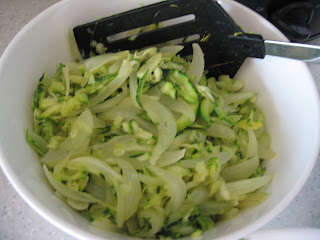Black Bean Chili - vegan style
3 cups black beans, cooked
black bean broth to liberally cover the cooked beans
1 heaping tablespoon coconut oil
1 medium onion, finely diced
2 stalks celery, diced
1 tomato, diced
4 cloves garlic, minced
1 large chunk ginger, diced
1 handful fresh parsley, chopped
2 teaspoons garlic powder
2 teaspoons turmeric
1 teaspoon cumin
1/2 teaspoon thyme
1/2 teaspoon sea salt
1/2 - 1 avocado, diced (optional)
Bring the black beans to a light boil, then add the diced onion, garlic cloves and ginger along with the coconut oil. Let cook 5 minutes, then add the diced celery, spices and seasonings. Cook another 3-4 minutes, then turn off the heat. Add in the diced tomatoes and chopped parsley. Stir together and serve while the colors are brilliant and the fresh taste, and the vitamins are at their height. If desired, serve with diced avocado.
 |
After turning off the heat, the vegies were added to the seasoned black beans
to keep their nutrients and flavors alive. |
And the following picture is from my first black bean chili creation. It tasted even better than the one above because this following recipe also included brown rice, which I slow-cooked together with the black beans the last 3-4 hours that the beans were cooking. Because I was hastily experiementing that night (and on a friend too), I didn't bother to write down what I was throwing in the pot. Too bad because we both loved it!
 |
A very spontaneous meal ... lemoned red-cabbage slaw, Onion Crackers,
and leftover black beans whipped up into a chili. |
|
Bits of my home sun-dried tomatoes were included in this one, and that's
where a lot of the yummy flavor was coming from! |
And yet another variation of a black bean soup supper : gingered zucchini, some stir-fried vegies, and the black beans and broth topped off with raw vegies.
 |
| vegies stir-fried in coconut oil with turmeric |
 |
| black beans with a little cumin, thyme and sea salt, and then with raw vegies added |
 |
| black bean soup simplified ... and delicious! |








Comments
Post a Comment